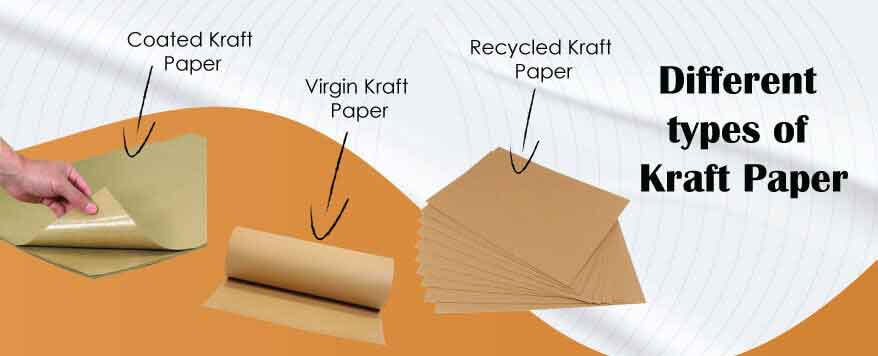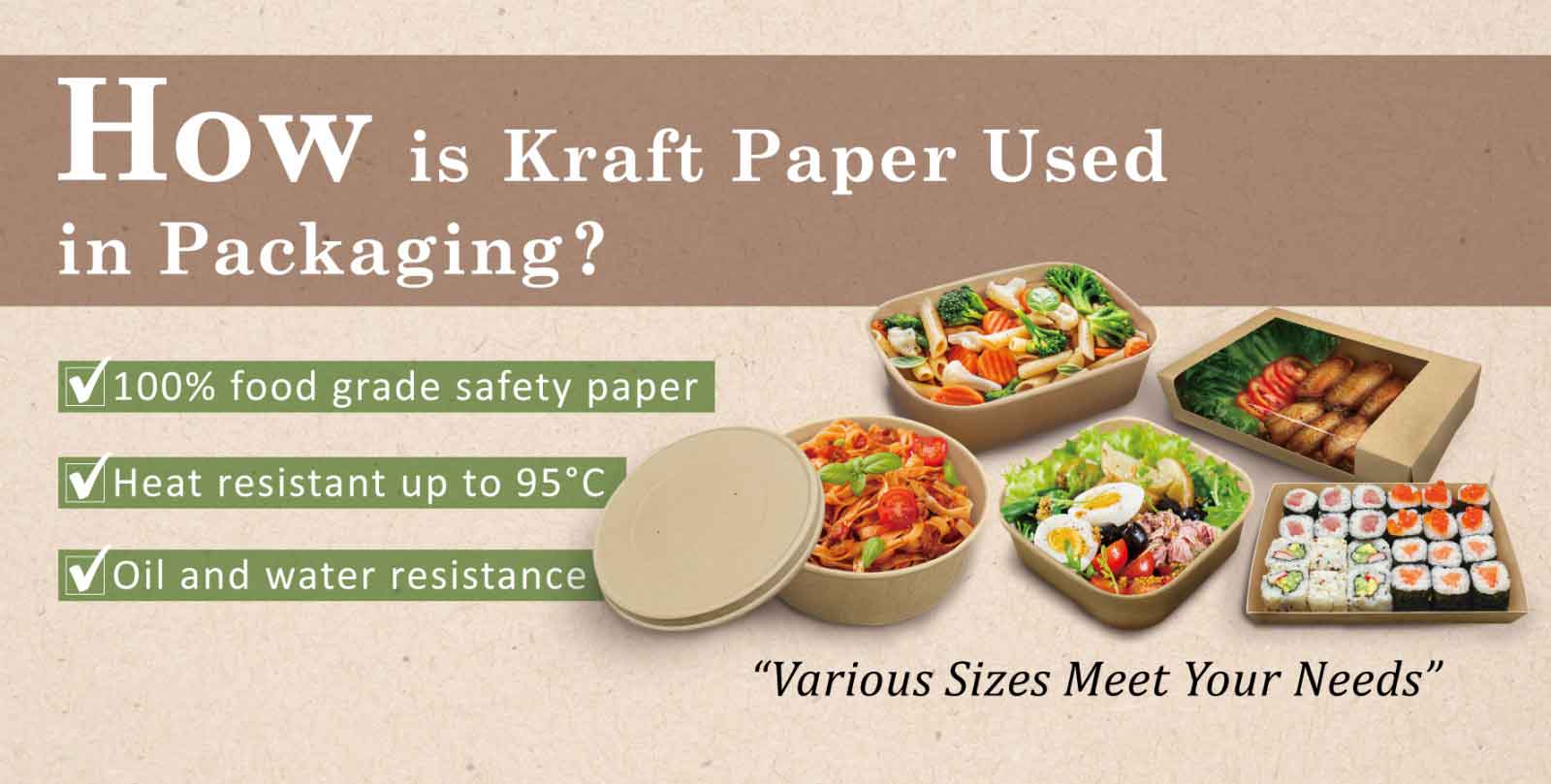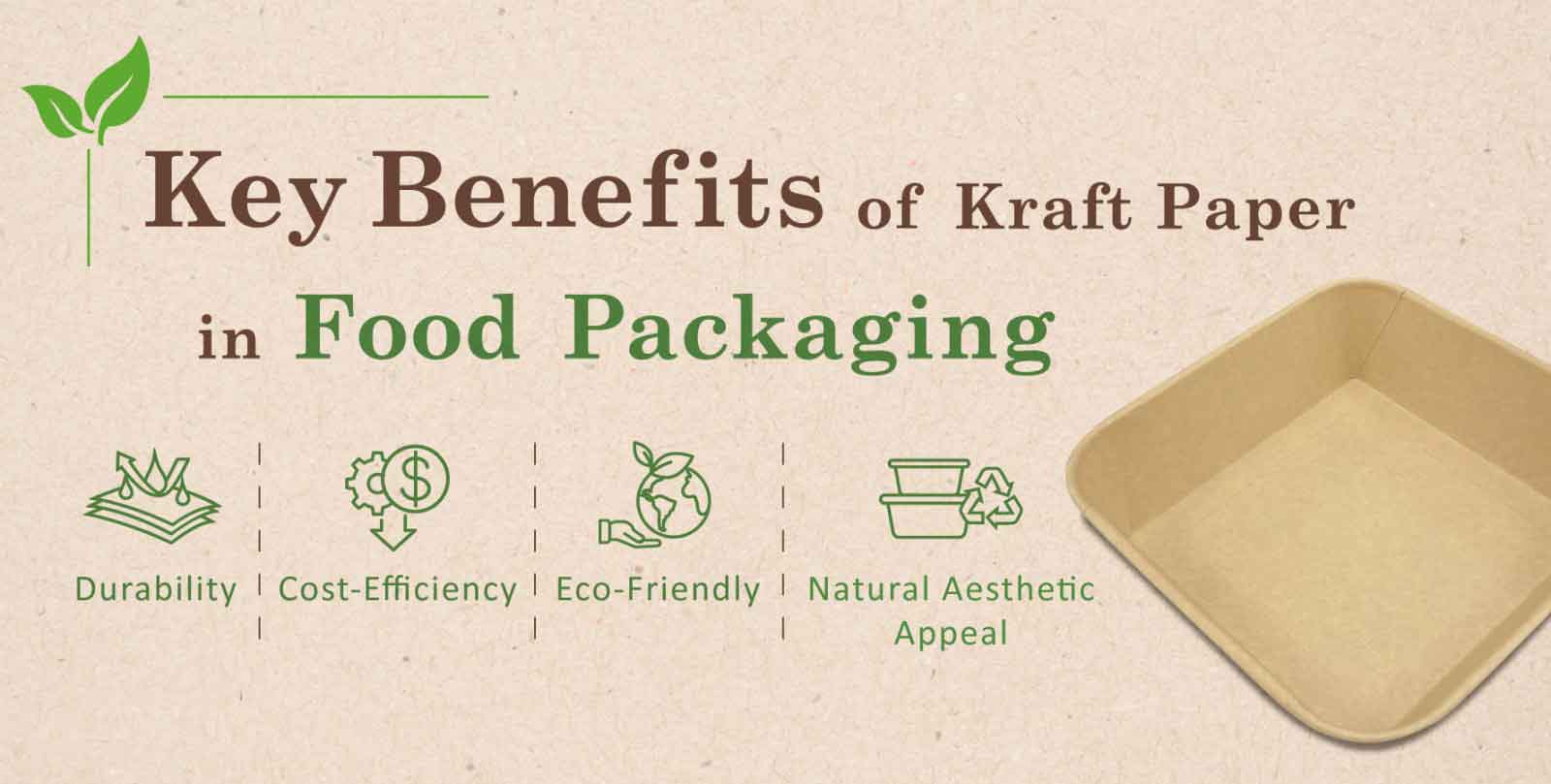
The production process of kraft paper mainly consists of the following steps:
The primary raw material for kraft paper is wood pulp, typically derived from tree fibers. Commonly used tree species include pine and eucalyptus.
The wood is cut into small chips and processed chemically or mechanically to extract pulp. Chemical pulping uses chemicals like sodium hydroxide or sulfate to break down lignin in wood and extract fibers.
The extracted pulp undergoes washing to remove impurities and undissolved lignin. Depending on requirements, bleaching may be applied to achieve desired color and brightness levels.
The washed and bleached pulp is diluted and mixed with water before being formed into paper sheets on a paper machine. Through pressing and drying processes, the fibers bond tightly to form durable kraft paper.
The kraft paper may undergo additional treatments as needed, such as coating or embossing, to enhance its durability and aesthetic qualities.
The finished kraft paper is cut into required sizes and shapes, then packaged for transportation and sale.
Through these steps, kraft paper is manufactured and widely applied in various packaging and product applications.

The superior toughness of kraft paper stems from its sulfate pulping process. This chemical treatment tightly bonds wood fibers, significantly enhancing tensile and tear strength. Unlike regular paper containers that deform or tear under weight/pressure, kraft paper containers offer robust protection—making them ideal for shipping heavy or fragile items.
Kraft paper’s porous surface has lower ink absorption, which may limit high-resolution color printing compared to regular paper. However, this characteristic unlocks unique finishing possibilities:
Foil Stamping: Metallic foils adhere more firmly to its textured surface, creating a luxurious effect.
Embossing/Debossing: Its fibrous structure holds 3D textures better, enhancing tactile appeal.
Thus, kraft paper excels in premium customizable packaging (e.g., gift boxes, luxury goods, or eco-conscious products).
Though both are paper-based, kraft paper is perceived as more sustainable. Its strength allows for less material use or reusability, aligning with circular economy trends. Regular paper, while cheaper, often requires plastic lamination or reinforcements—increasing environmental costs.

Strength & Grease Resistance
Kraft paper is renowned for its exceptional tensile strength, providing outstanding tear and puncture resistance. This characteristic is particularly crucial in food service applications, where packaging must withstand various stresses during transportation and handling while maintaining integrity and safety. Especially when dealing with greasy foods, kraft paper's superior grease resistance ensures the packaging remains intact.
Moisture Resistance
The tightly woven natural fibers of kraft paper offer inherent moisture resistance. This property allows it to maintain structural stability and integrity even when in contact with moist foods or used in humid environments, effectively protecting the contents from moisture damage.
Versatility
Kraft paper is widely adaptable, making it an ideal choice for diverse food packaging solutions. Whether used for containers, bags, boxes, or other packaging forms, kraft paper delivers reliable performance. Its robust structure ensures safe containment of various food types, including dry goods, temperature-sensitive items, and delicate baked products.
Adaptability
Kraft paper can be further enhanced through coatings or lamination with other materials to improve barrier properties. This flexibility expands its suitability for a broader range of food types, particularly greasy or moist foods, thereby extending its application scope.
Affordability
One of kraft paper's standout advantages is its exceptional cost-efficiency. Compared to other eco-friendly and biodegradable packaging materials, kraft paper offers more economical pricing. This affordability enables businesses to effectively reduce packaging costs while maintaining product quality, thereby enhancing market competitiveness. Both small businesses and large-scale manufacturers can achieve significant cost savings by adopting kraft paper solutions.
Eco-Conscious Production
Kraft paper's manufacturing process is relatively simple and requires fewer resources, resulting in lower production costs. Additionally, as it is primarily made from renewable wood pulp, kraft paper ensures sustainable packaging choices. This production approach not only reduces natural resource consumption but also promotes sustainable development, offering businesses a responsible production solution.
Reduced Carbon Footprint
Another key benefit of kraft paper lies in its environmental credentials. As a biodegradable and recyclable material, its use in food packaging significantly minimizes environmental impact. Compared to traditional plastic food containers, kraft paper holds clear ecological advantages. This allows businesses to appeal to sustainability-conscious consumers, elevate brand image, and demonstrate commitment to social and environmental responsibility. By reducing carbon footprints, companies can fulfill corporate social responsibilities while gaining a competitive edge in the market.
Kraft paper's organic and artisanal charm makes it an ideal choice for food service packaging. Its distinctive earthy brown tone not only exudes rustic elegance but also enhances the visual presentation of food. This aesthetic is particularly favored by restaurants emphasizing handmade craftsmanship and locally-sourced ingredients, as it perfectly complements their authentic, wholesome brand ethos.
Brand Perception & Consumer Psychology
Products packaged in kraft paper naturally elevate a brand's image by demonstrating commitment to environmental responsibility. Many consumers inherently associate kraft paper packaging with healthier, more sustainable choices, significantly boosting brand appeal.
Design Versatility & Customization
Kraft paper's neutral color palette serves as an ideal canvas for diverse branding and custom designs. Compatible with various printing techniques and ink types, it enables businesses to create personalized packaging that showcases unique brand identities—from minimalist logos to vibrant, bold patterns.
Tactile Experience
The material's texture adds a distinctive sensory dimension to dining experiences. Its natural grain and substantial hand-feel elevate the overall food presentation, creating memorable impressions for customers.
Sustainability Messaging
The very appearance of kraft paper—natural, unrefined, and organic—visually communicates strong ecological values. In today's eco-conscious market, this subtle yet powerful visual cue effectively highlights a brand's sustainability commitment, providing competitive differentiation.
For food service businesses seeking to enhance product presentation while maintaining sustainability, kraft paper food packaging stands out as the optimal choice. Combining rugged durability, cost-effectiveness, and natural aesthetics, it adapts seamlessly to diverse food packaging needs while delivering full functionality. With high tensile strength and exceptional grease/moisture resistance, kraft paper emerges as a reliably durable food container.
As an economical and eco-conscious solution, kraft paper—being both renewable and recyclable—helps minimize environmental impact while resonating with increasingly sustainability-minded consumers. Its rustic appearance elevates brand identity while creating distinctive dining experiences. By adopting kraft paper packaging, food businesses can present culinary offerings in ways that are both refined and sustainable, aligning with contemporary dining trends and meeting the expectations of eco-aware customers.
If your food service operation is exploring more sustainable takeout solutions, Xihe offers an extensive range of kraft paper products including eco-friendly disposable cups, bowls, and takeout containers. Contact our team to discover more about our sustainable food packaging solutions!

